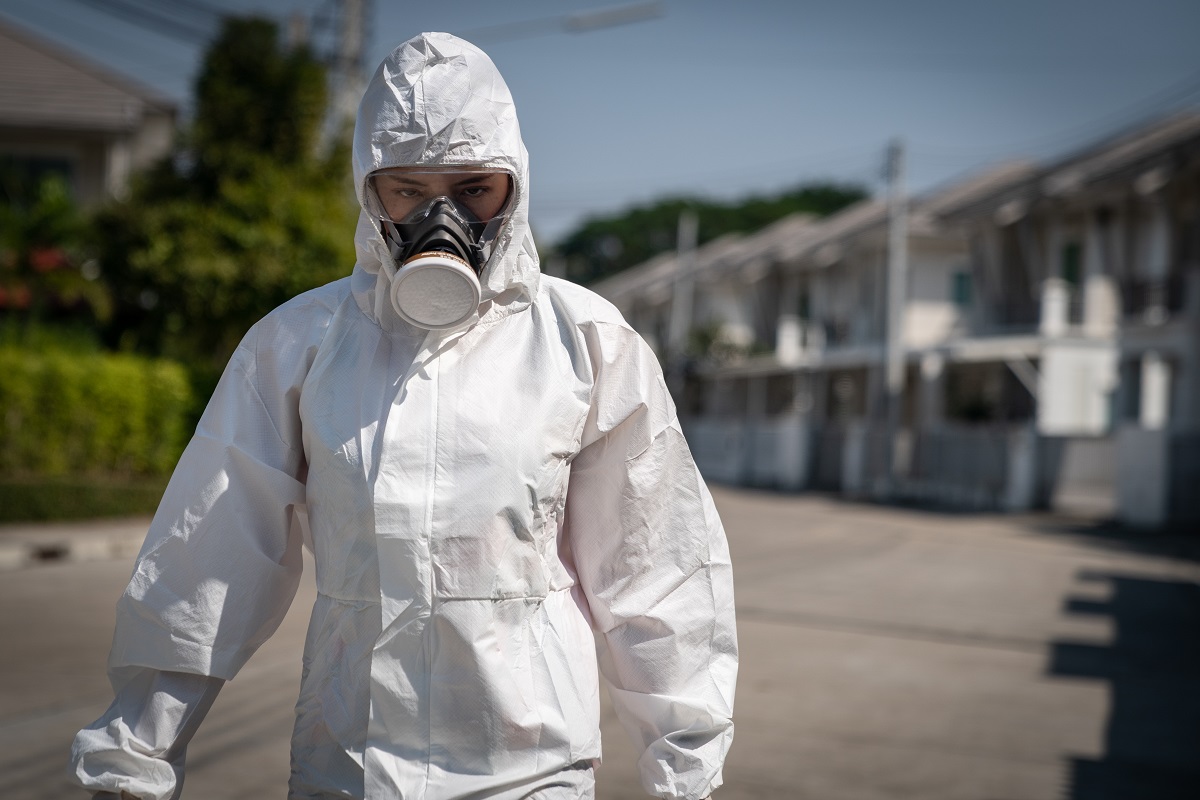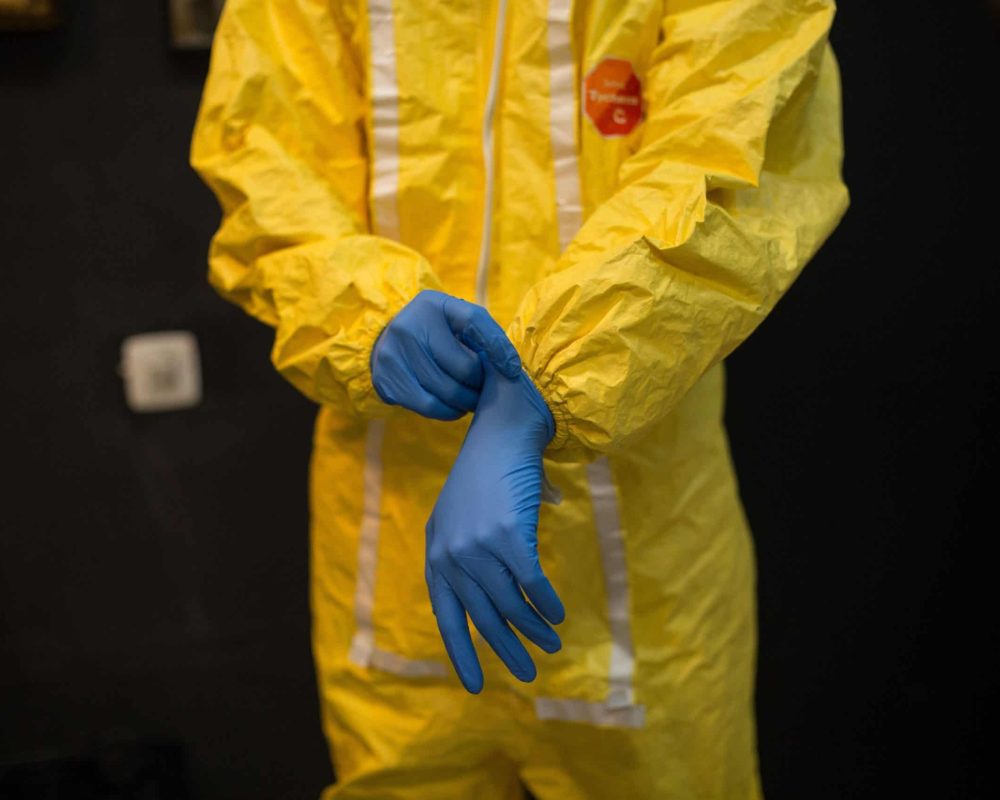Sewage Cleanup Providers: Quick and Safe Remediation of Contaminated Locations
Sewage Cleanup Providers: Quick and Safe Remediation of Contaminated Locations
Blog Article
Expert Biohazard Cleaning and Decontamination for Blood, Bodily Fluids, and Hazardous Products
The possible wellness threats linked with exposure to biohazards emphasize the essential requirement for precise handling and complete cleaning. As we browse the detailed landscape of biohazard cleaning, recognizing the nuances of regulations, conformity, and the specific devices at play ends up being imperative in making sure a risk-free and extensive decontamination procedure.
Health And Wellness Risks of Biohazard Exposure
Exposure to biohazards presents considerable health and wellness threats that can lead to extreme consequences for communities and individuals alike. Biohazards incorporate a vast array of organic substances, including blood, bodily liquids, mold and mildew, bacteria, viruses, and other potentially contagious materials. When people enter call with these biohazards, whether through accidents, incorrect handling, or ecological direct exposure, they encounter the threat of contracting severe illnesses or illness.
One of the main health and wellness risks related to biohazard direct exposure is the transmission of infectious illness. Bloodborne virus such as HIV, liver disease B and C, and different microorganisms can be existing in biohazardous products, posturing a straight hazard to human wellness. Breathing in air-borne biohazards like mold spores or entering into contact with infected surface areas can additionally bring about breathing problems, allergies, and other unfavorable health results.
Additionally, biohazard exposure can have lasting health effects, with some diseases showing up years after the initial call (Blood Cleanup). Consequently, it is critical to focus on correct biohazard cleansing and decontamination to reduce these health dangers and make certain the safety and security of neighborhoods and individuals

Specialized Training for Biohazard Cleanup
When it involves managing biohazard cleaning effectively and safely, specialized training plays an essential role in making certain correct purification treatments are complied with. Biohazard cleaning needs specific knowledge and skills to efficiently minimize risks related to bloodborne virus, physical liquids, and dangerous products. Specialists learnt biohazard cleanup undergo extensive direction on just how to securely take care of, eliminate, and deal with biohazardous materials to avoid contamination and direct exposure.
Specialized training for biohazard cleaning covers a series of crucial topics, consisting of correct individual safety devices (PPE) usage, bloodborne virus awareness, purification strategies, and contaminated materials disposal methods. Individuals educated in biohazard cleaning are equipped with the necessary competence to examine contamination degrees, determine possible hazards, and implement suitable clean-up procedures in conformity with governing requirements.
Continuous training and education are extremely important in the field of biohazard cleaning to stay updated on the most current decontamination modern technologies, safety methods, and guidelines. By purchasing specialized training, biohazard clean-up specialists can properly react to emergency cleaning situations and safeguard both public health and wellness and the environment.
Value of Appropriate Decontamination Techniques
Making use of correct decontamination techniques is important in biohazard cleaning to properly decrease and get rid of unsafe materials wellness threats. Reliable decontamination not just ensures the elimination of noticeable traces of blood, bodily liquids, and various other biohazards but likewise targets unnoticeable microorganisms that may present severe health and wellness dangers if not effectively eradicated. By complying with rigorous purification procedures, trained experts can dramatically lower the threat of direct exposure to hazardous bacteria, viruses, and microorganisms that can result in infections or diseases.
Appropriate purification methods involve the usage of customized tools and disinfectants that are especially designed to counteract biohazards properly. Extensive cleansing official website and sanitation of infected locations are necessary to prevent the spread of microorganisms and make certain a secure atmosphere for residents. Furthermore, the right disposal of biohazardous waste following purification treatments is important in stopping contamination of other surfaces or individuals.

Equipment and Tools for Safe Cleanup
The correct equipment and tools play an essential role in ensuring the efficient and safe cleanup of biohazardous materials. When handling blood, bodily liquids, or hazardous materials, biohazard cleaning specialists rely upon specialized gear to decrease direct exposure dangers and extensively decontaminate the afflicted area. Individual safety devices (PPE) such as handwear covers, goggles, masks, and coveralls are important to safeguard versus straight call with potentially infectious materials. Additionally, biohazard cleaning kits containing disinfectants, absorptive products, and biohazard bags are utilized to securely dispose and consist of of infected products. Blood Cleanup.
Advanced cleaning tools like hospital-grade anti-bacterials, HEPA-filtered vacuums, and fogging equipments are employed to sanitize surface areas and get rid of biohazards properly. Specialized devices such as sharps containers and biohazard waste disposal bins are used to securely manage sharp objects and biohazardous waste materials. By utilizing the right devices and devices, biohazard cleansing professionals can make certain a thorough cleanup process that prioritizes safety and reduces health risks for both workers and owners of the affected room.
Rules and Compliance in Biohazard Cleansing
Proper adherence to policies and compliance standards is extremely important in biohazard cleansing to guarantee the safety and security of both workers and the setting. Federal government firms such as OSHA (Occupational Safety and Wellness Management) and the EPA (Environmental Defense Agency) have actually established specific guidelines for biohazard clean-up procedures to minimize health and read here wellness risks and environmental contamination. These regulations cover a variety of aspects including the handling, transport, and disposal of biohazardous materials, along with the needed training and safety devices required for employees involved in the clean-up process.
Biohazard cleaning firms must remain current with these regulations to ensure that their procedures satisfy the needed safety and security criteria. Failing to comply with these guidelines can result in severe effects, consisting of fines, lawsuit, and endangering the health of people and the setting. By adhering to rigid policies and compliance actions, biohazard cleansing firms can successfully mitigate dangers and make sure a detailed and risk-free cleaning process read more for all events involved.
Conclusion
To conclude, biohazard cleaning and purification require specific training, appropriate methods, and adherence to regulations. Direct exposure to blood, bodily liquids, and hazardous products presents considerable health dangers, making it critical to make use of the appropriate tools and devices for safe cleaning. By following strict protocols and guidelines, specialists can successfully mitigate the threats connected with biohazard exposure and make sure the safety and security of both themselves and others.
As we browse the detailed landscape of biohazard clean-up, comprehending the subtleties of guidelines, compliance, and the customized tools at play ends up being critical in guaranteeing a detailed and risk-free purification process. (Blood Cleanup)
When it comes to dealing with biohazard clean-up efficiently and securely, specialized training plays an essential duty in making sure appropriate decontamination procedures are followed.Utilizing proper purification methods is important in biohazard cleanup to efficiently decrease and get rid of unsafe materials wellness risks. In addition, biohazard cleansing sets having anti-bacterials, absorbent products, and biohazard bags are used to securely dispose and consist of of polluted items.
Government firms such as OSHA (Occupational Safety and Health Management) and the EPA (Environmental Security Agency) have established certain standards for biohazard cleanup treatments to minimize health and wellness dangers and ecological contamination.
Report this page